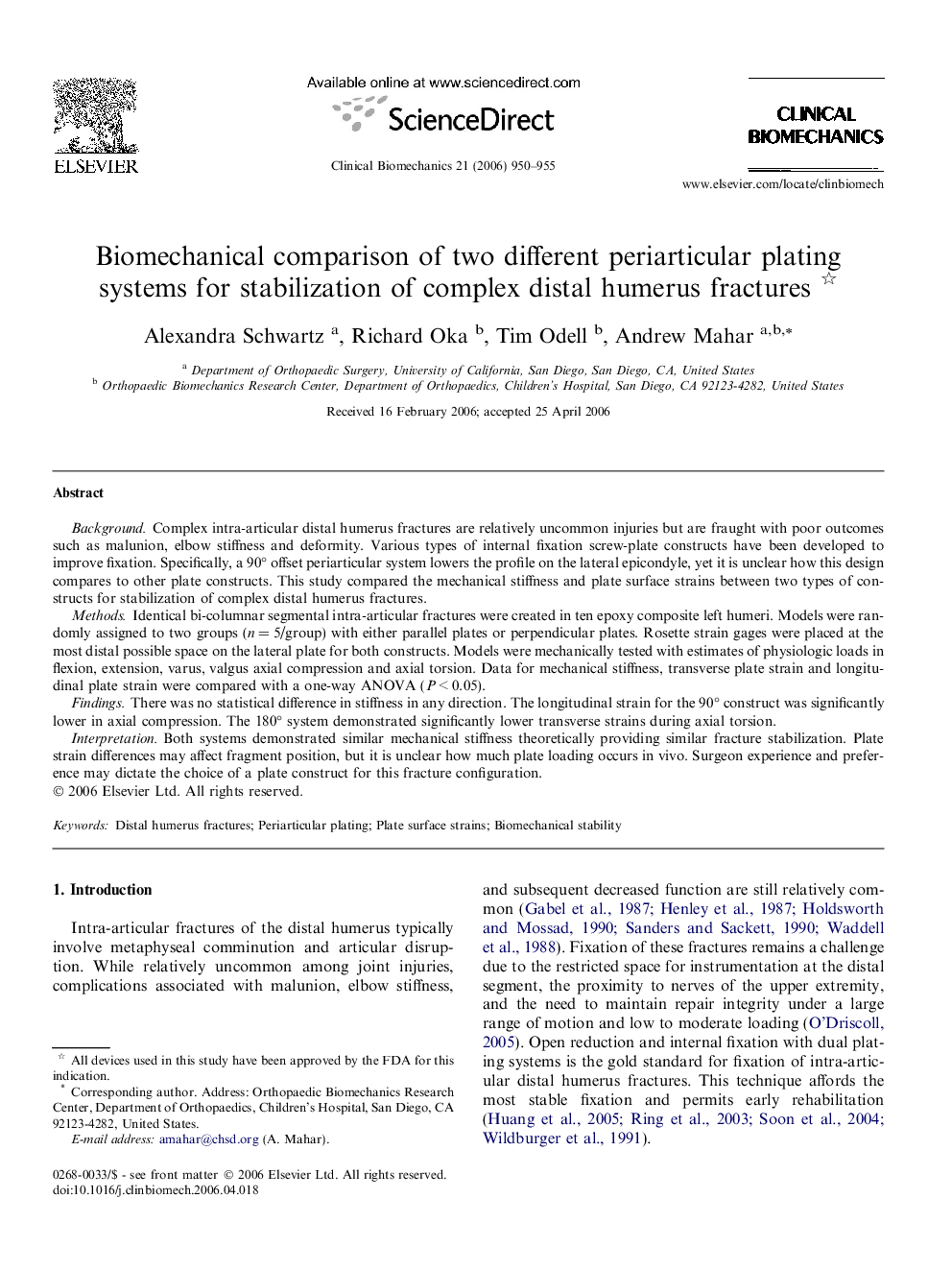| Article ID | Journal | Published Year | Pages | File Type |
|---|---|---|---|---|
| 4051349 | Clinical Biomechanics | 2006 | 6 Pages |
BackgroundComplex intra-articular distal humerus fractures are relatively uncommon injuries but are fraught with poor outcomes such as malunion, elbow stiffness and deformity. Various types of internal fixation screw-plate constructs have been developed to improve fixation. Specifically, a 90° offset periarticular system lowers the profile on the lateral epicondyle, yet it is unclear how this design compares to other plate constructs. This study compared the mechanical stiffness and plate surface strains between two types of constructs for stabilization of complex distal humerus fractures.MethodsIdentical bi-columnar segmental intra-articular fractures were created in ten epoxy composite left humeri. Models were randomly assigned to two groups (n = 5/group) with either parallel plates or perpendicular plates. Rosette strain gages were placed at the most distal possible space on the lateral plate for both constructs. Models were mechanically tested with estimates of physiologic loads in flexion, extension, varus, valgus axial compression and axial torsion. Data for mechanical stiffness, transverse plate strain and longitudinal plate strain were compared with a one-way ANOVA (P < 0.05).FindingsThere was no statistical difference in stiffness in any direction. The longitudinal strain for the 90° construct was significantly lower in axial compression. The 180° system demonstrated significantly lower transverse strains during axial torsion.InterpretationBoth systems demonstrated similar mechanical stiffness theoretically providing similar fracture stabilization. Plate strain differences may affect fragment position, but it is unclear how much plate loading occurs in vivo. Surgeon experience and preference may dictate the choice of a plate construct for this fracture configuration.
